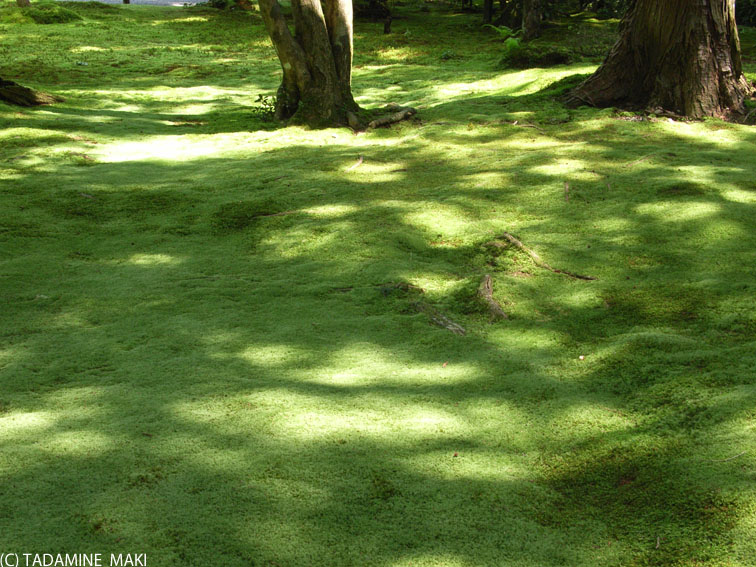The Garden as a Campus
Points of View
(1)Moss like a silk scarf
(2)Maple trees along the stream
(3)The song of streams
The Ohara area lies to the north of Kyoto city, around one hour from Kyoto Station by bus. Ohara still has rural scenery between mountains, consisting of small patches of fields, terraced paddies, mild streams and cedar trees. Within this rich natural environment are several temples, the main one of which is Sanzen-in Temple, described in this chapter. The temple is found in the center of the Ohara area, and features beautiful moss and streams that bring a feeling of relaxation throughout the year. In the autumn, visitors also enjoy the red and yellow of the changing maple leaves. Now, let’s go there.
The temple is reached by bus from the terminal right in front of Kyoto Station. After passing through a grid of streets in the town, the bus runs further north on a county road. Alongside the road runs a small river, and the road is flanked with forested hills of abundant cedar trees. On the way, paddy fields can be seen stretching above the houses along the road. In just over an hour, the vehicle arrives at Ohara bus stop.
After getting off the bus, you walk for about ten minutes along a gentle slope to get to Sanzen-in Temple. After walking for a while, a good view appears: patches of rice fields lie in front of cedar-covered mountains, representing the traditional scenery of Japanese villages of olden times.
Further along, the path becomes covered with maple trees that turn a fresh green from spring to summer, and yellow and red in autumn. Along the path are numerous shops and a small stream. The shade of the trees and the flowing water bring a feeling of mild coolness.
Moving along the slope, you see Sanzen-in on the left. After entering the building and walking through the hallway, you see a small garden mainly consisting of a tiny pond and some vegetation. You then leave the building and move on to another structure that houses a number of excellent statues. Both sides of the path to the building are covered with a stretch of verdant moss. Together with the abundant green of the leaves on the trees, the visitor is cocooned in the pleasant greens of nature.
The moss has a fine, velvety touch that is quite unlike grass. It feels smooth like silk, while grass feels rough like hemp. The mossy surfaces appear as if covered with a silk scarf, and are casually patterned with the dappled shade of the fine maple leaves.
After passing through the stretch of moss, you go upstairs to a small flat piece of ground surrounded by many tall cedar trees. These are pruned quite sharply, with branches remaining only at the top, and stand just like matchsticks.
The path leads down to a narrow winding slope on the hillside that returns to the carpet of moss. Along the path runs another tiny stream, and visitors can enjoy its trickling song. This sound, together with the verdant green of the trees, gives a feeling of pleasant coolness.
Incidentally, four natural colors are typically found in Kyoto: the pink hue of cherry trees in spring, the fresh green of bamboo, moss and maple leaves, the yellow/red of maple leaves in autumn, and the clarity of water. In Ohara, visitors can savor the taste of the verdure, yellow/red and clarity, while moving to the outskirts gives an impression of the rich greens of Japan.
